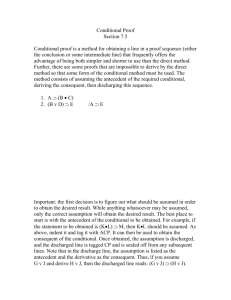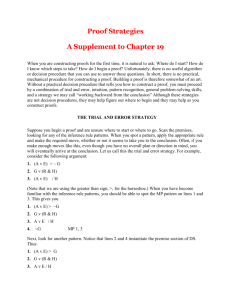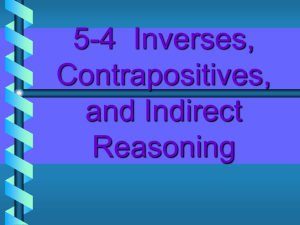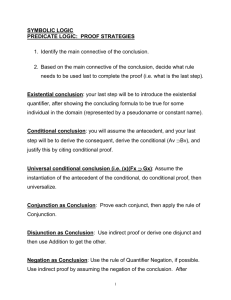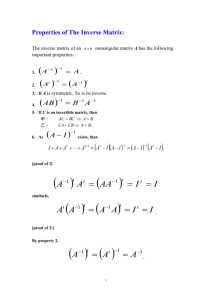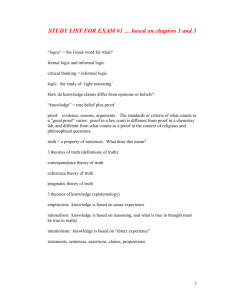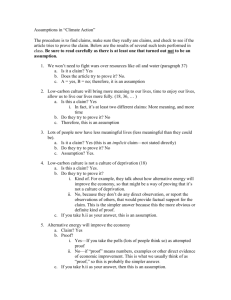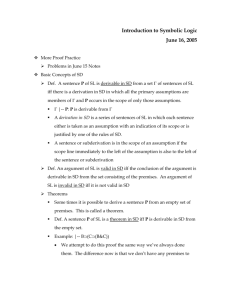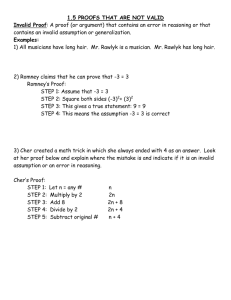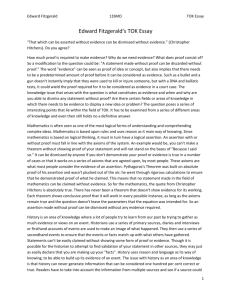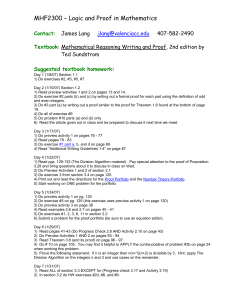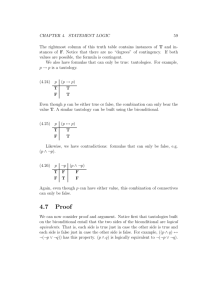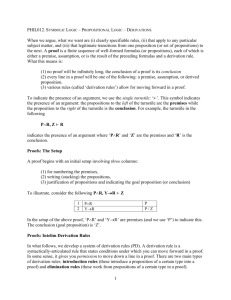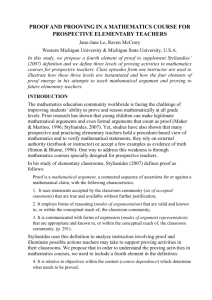Indirect Proof
advertisement
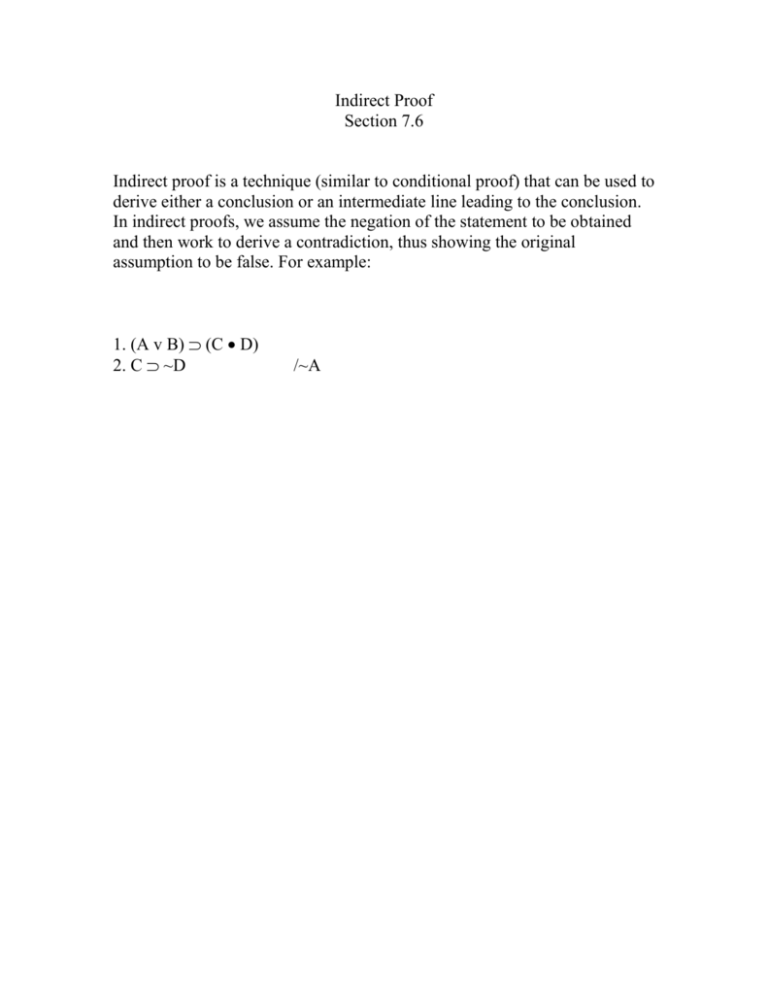
Indirect Proof Section 7.6 Indirect proof is a technique (similar to conditional proof) that can be used to derive either a conclusion or an intermediate line leading to the conclusion. In indirect proofs, we assume the negation of the statement to be obtained and then work to derive a contradiction, thus showing the original assumption to be false. For example: 1. (A v B) (C D) 2. C ~D /~A It can also be used to derive an intermediate line: 1. E [(F v G) (H J)] 2. E ~(J v K) /~(F v K) Note that sometimes we need to be aware of our priorities in deriving certain lines. If lines 6 and 7 had been included in the IP, they would have to be repeated in order to get to the conclusion. Like CP, once the IP assumption is discharged, it is sealed off from subsequent use. And it can be used within the scope of a conditional proof (and vice-versa) 1. L [~M (N O)] 2. ~N P /L (M P) CP and IP are also combined in this proof (this is #19 in from the exercises): 1. A [(N v ~N) (S v T)] 2. T ~ (F v ~ F) /AS Either conditional or indirect proof must often be used when the conclusion of the argument is a tautology. 1. S /T v ~T 1. S /T T Compare the conditional proof with the indirect on page 400. #2 1. (K K) R 2. (R v M) N /N #5 1. S (T v ~U) 2. U (~T v R) 3. (S U) ~R / ~S v ~U #7 1. (E v F) (C D) 2. (D v G) H 3. E v G /H #11 1. (A v B) C 2. (~A v D) E #14 1. F /CvE / (G H) v (~ G J) #17 1. (R S) (G H) 2. R S 3. H G /RH

